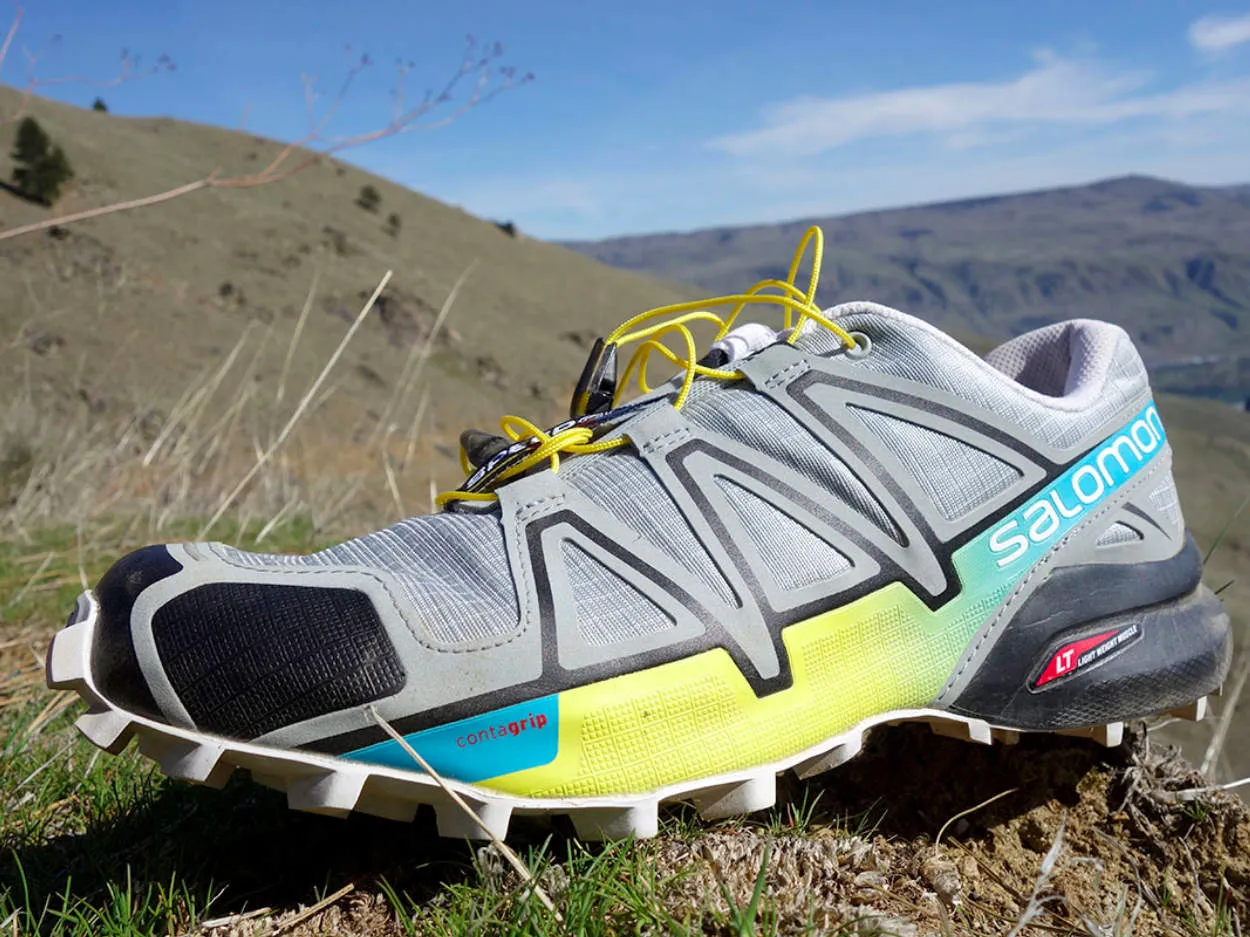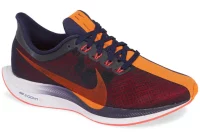Trail running shoes are essential equipment for runners looking to conquer rough terrains. Designed with durable soles and rugged tread patterns, these shoes provide superior grip and stability on uneven surfaces. Whether you’re tackling rocky trails or muddy paths, trail running shoes offer the necessary support and protection for your feet. Strap on a pair and embrace the thrill and challenge of off-road running!
Selecting Shoes for Off-Road Running
When it comes to conquering rough terrain during trail running, choosing the right shoes is essential. Off-road running presents unique challenges that require specialized footwear. Here are some important factors to consider when selecting trail running shoes:
-
Sturdy Outsole
Look for shoes with a durable and aggressive outsole design. Deep lugs provide excellent traction on uneven surfaces, while a rock plate protects your feet from sharp objects.
-
Supportive Midsole
A supportive midsole keeps your feet stable on uneven terrain. Look for shoes with cushioning technology that offers a good balance between impact absorption and responsiveness.
-
Protective Upper
An ideal trail running shoe should have a protective upper that shields your feet from rocks, roots, and debris. Additionally, a breathable and water-resistant material can help keep your feet dry and comfortable.
-
Fit and Comfort
A proper fit is crucial to prevent blisters and discomfort during long runs. Make sure the shoes offer enough room in the toe box for natural foot movement, with a secure fit around the heel to avoid slipping.
-
Weight and Flexibility
Consider the weight of the shoes. Lighter options can offer increased agility and speed but may sacrifice some durability. Balance your preference for lightness with the demands of the terrain you’ll be running on. Also, look for shoes that provide a good balance between flexibility and stability.
By taking these factors into account, you can choose the right trail running shoes that will provide the necessary support and protection for your off-road adventures.
The Importance of Traction and Stability
When it comes to conquering rough terrain, one of the most crucial factors to consider is the traction and stability provided by your trail running shoes. These characteristics play a vital role in ensuring your safety, performance, and overall satisfaction while tackling challenging trails.
1. Traction
Trail running shoes with excellent traction offer a firm grip on uneven surfaces, such as muddy trails, slippery rocks, and loose gravel. This feature allows you to maintain control and avoid slips and falls, providing a high level of confidence during your runs. Look for shoes with deep lugs and aggressive tread patterns, as they are designed to provide optimal traction on various terrains.
2. Stability
Stability is another critical aspect of trail running shoes, especially when navigating rough, uneven terrains. Shoes with good stability help prevent ankle rolls and provide support to your feet, reducing the risk of injuries. Look for shoes with supportive midsoles, ankle collars, and sturdy outsoles to ensure stability while running on unpredictable surfaces.
3. Impact Absorption
Trail running can be demanding on your joints and muscles due to the uneven and unpredictable nature of the terrain. Shoes with effective impact absorption capabilities help to minimize the stress on your body. Features like cushioned midsoles and responsive materials provide protection and comfort, allowing you to run longer distances with less fatigue and discomfort.
4. Durability
Since trail running involves encountering various obstacles, it is essential to choose shoes that are durable enough to withstand the challenges of the terrain. Look for shoes made from durable materials like reinforced mesh, synthetic overlays, and protective toe caps. These features contribute to the longevity of the shoes, ensuring they can withstand the rough conditions you may encounter.
In conclusion, the importance of traction and stability in trail running shoes cannot be underestimated. Prioritizing these qualities when selecting your footwear will enhance your overall trail running experience, reduce the risk of injuries, and allow you to confidently conquer rough terrains.
Comparing Popular Trail Running Brands
When it comes to conquering rough terrain, having the right pair of trail running shoes is essential. With numerous brands available in the market, it can be overwhelming to choose the best option. This article aims to compare some of the popular trail running brands, highlighting their key features and advantages.
1. Salomon
Salomon is widely recognized for its high-performance trail running shoes. Known for their exceptional grip and durability, Salomon shoes are a top choice among experienced trail runners. They are designed to provide stability and protection, even on the most challenging terrains.
2. Brooks
Brooks offers a wide range of trail running shoes suitable for different terrains and runners’ preferences. Known for their comfortable fit and cushioning, Brooks shoes excel in providing a smooth and responsive running experience. They also offer options with excellent traction for tackling rugged trails.
3. Saucony
Saucony trail running shoes are known for their versatility and performance. With a focus on comfort and traction, Saucony offers lightweight yet durable shoes that can handle various terrains. Their innovative designs make them a popular choice among both beginners and experienced trail runners.
4. Merrell
Merrell trail running shoes are designed with durability and protection in mind. With features like reinforced toe caps and rugged outsoles, they are built to withstand rocky and uneven terrains. Merrell shoes also offer excellent stability and support, ensuring a comfortable run on any trail.
5. Altra
Altra trail running shoes are known for their unique zero-drop platform and spacious toe box design. This feature allows for a more natural foot position and better toe splay, reducing the risk of injuries. Altra shoes are popular among runners seeking a minimalist yet comfortable running experience.
While these are just a few of the popular trail running brands, it’s important to consider your individual needs and preferences when choosing the perfect pair. Each brand offers its own unique features and benefits, enabling you to conquer rough terrains with confidence and comfort.
Caring for Your Trail Running Shoes
Trail running shoes are designed to withstand the challenging terrain and provide support and grip to ensure a safe and enjoyable running experience. Knowing how to properly care for your trail running shoes can increase their lifespan and maintain their performance. Here are some tips to help you take good care of your trail running shoes:
-
Clean them regularly
After every trail run, take the time to clean your shoes. Remove any dirt, debris, or mud that may have accumulated on the shoes. Use a soft brush or cloth, and if necessary, gently scrub the outsoles to remove stubborn dirt. Cleaning your shoes will prevent the buildup of dirt and help maintain their traction.
-
Air dry them
After cleaning, let your trail running shoes air dry naturally. Avoid using direct heat sources, such as heaters or sunlight, as they can damage the materials and weaken the adhesives. Stuff the shoes with crumpled newspaper or shoe trees to help them maintain their shape and absorb moisture.
-
Rotate your shoes
Consider owning more than one pair of trail running shoes and rotate them regularly. This allows each pair to have enough time to dry and recover between runs. Rotating your shoes also helps to evenly distribute the wear and tear, prolonging their overall lifespan.
-
Store them properly
When you’re not using your trail running shoes, store them in a cool, dry place away from direct sunlight. Avoid packing them tightly or leaving heavy objects on top of them, as this could deform the shoe’s structure.
-
Inspect for damage
Before each run, inspect your trail running shoes for any signs of wear or damage. Check the outsoles, midsoles, and uppers for any visible issues such as loose stitching, sole separation, or significant tread wear. Addressing these problems early can prevent further damage and potential injuries.
-
Replace when necessary
Trail running shoes, like any other footwear, have a limited lifespan. As your shoes start to show irreversible wear and tear, such as significant loss of tread or lack of cushioning, it is time to consider replacing them. Continuing to run with worn-out shoes can compromise your performance and increase the risk of injury.
How Trail Shoes Differ from Road Running Shoes
Trail running shoes are specifically designed to tackle the challenges of off-road running, where the terrain can be rough, uneven, and unpredictable. Unlike road running shoes, trail shoes are optimized to provide stability, protection, and traction for the runner.
Here are the key differences between trail shoes and road running shoes:
1. Outsole
The outsole of trail shoes is usually more aggressive and rugged compared to road running shoes. It features lugs, deep grooves, or multidirectional patterns that provide superior traction and grip on various surfaces, including mud, rocks, and loose gravel.
2. Midsole
Trail shoes have a more cushioned and supportive midsole compared to road running shoes. This extra cushioning helps absorb shocks and protects the feet from sharp objects or uneven surfaces commonly encountered on trails.
3. Upper
The upper of trail shoes is typically more durable and reinforced to withstand the demands of rough terrain. It may have overlays or protective toe caps to shield the feet from rocks and debris. Additionally, trail shoes often feature water-resistant or waterproof materials to keep the feet dry in wet conditions.
4. Stability
Trail shoes provide enhanced stability compared to road running shoes. They have wider soles and a lower heel-to-toe drop, which helps prevent ankle rolling on uneven surfaces.
5. Weight
Trail shoes are generally heavier than road running shoes due to their added features and durability. The additional weight contributes to better protection and stability on rugged trails.
When choosing between trail shoes and road running shoes, it’s important to consider the running environment and your specific needs. While road running shoes are designed for smooth surfaces, trail shoes offer the necessary support and traction to conquer rough terrain.
Conclusion
Trail running shoes are essential for conquering rough terrain. Their durable construction, grippy outsoles, and protective features provide the necessary support for off-road running. Whether you are a beginner or an experienced trail runner, investing in a good pair of trail running shoes will greatly enhance your performance and keep you safe on the trails.




